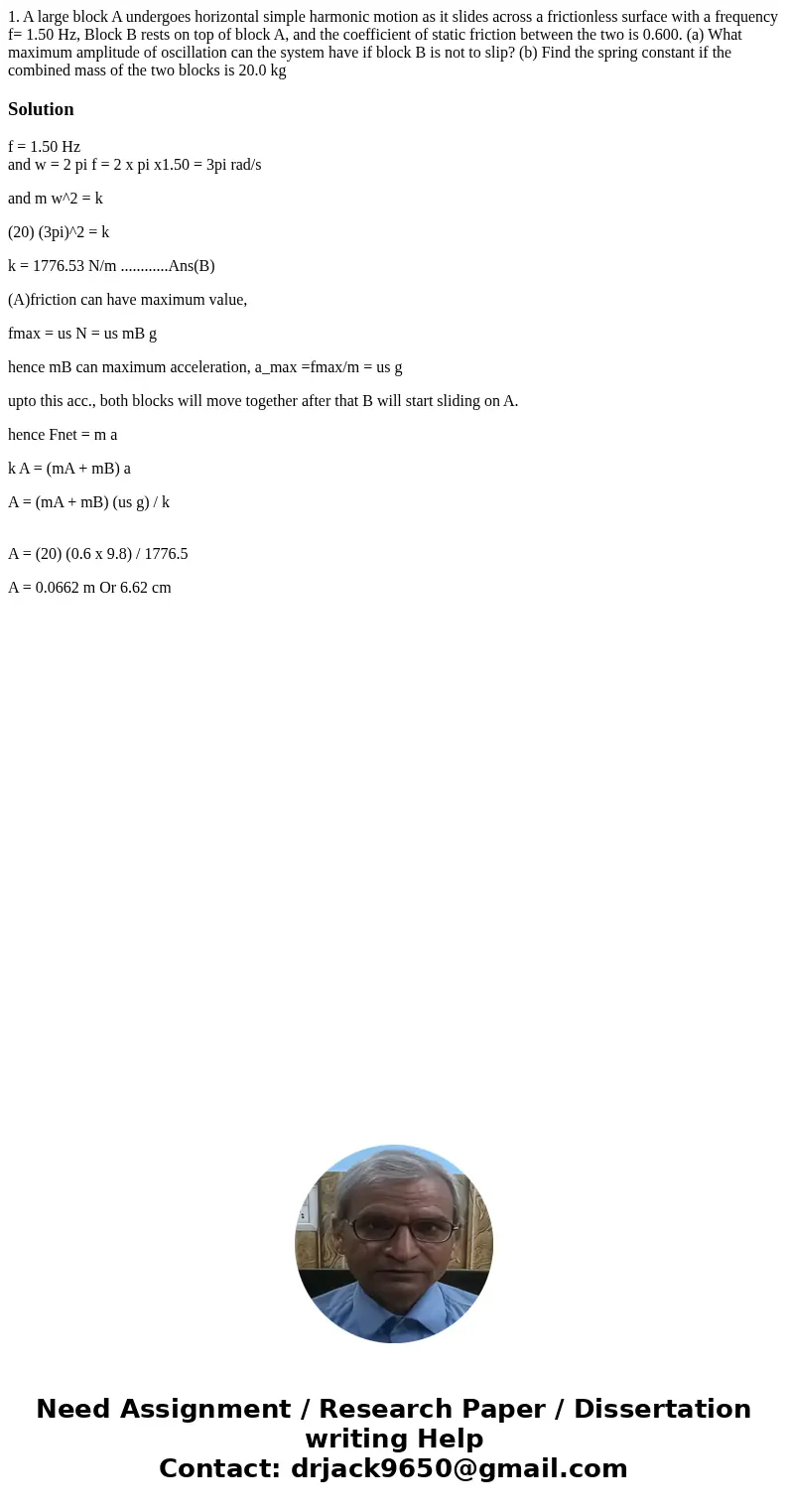1 A large block A undergoes horizontal simple harmonic motio
1. A large block A undergoes horizontal simple harmonic motion as it slides across a frictionless surface with a frequency f= 1.50 Hz, Block B rests on top of block A, and the coefficient of static friction between the two is 0.600. (a) What maximum amplitude of oscillation can the system have if block B is not to slip? (b) Find the spring constant if the combined mass of the two blocks is 20.0 kg 
Solution
f = 1.50 Hz
and w = 2 pi f = 2 x pi x1.50 = 3pi rad/s
and m w^2 = k
(20) (3pi)^2 = k
k = 1776.53 N/m ............Ans(B)
(A)friction can have maximum value,
fmax = us N = us mB g
hence mB can maximum acceleration, a_max =fmax/m = us g
upto this acc., both blocks will move together after that B will start sliding on A.
hence Fnet = m a
k A = (mA + mB) a
A = (mA + mB) (us g) / k
A = (20) (0.6 x 9.8) / 1776.5
A = 0.0662 m Or 6.62 cm

 Homework Sourse
Homework Sourse